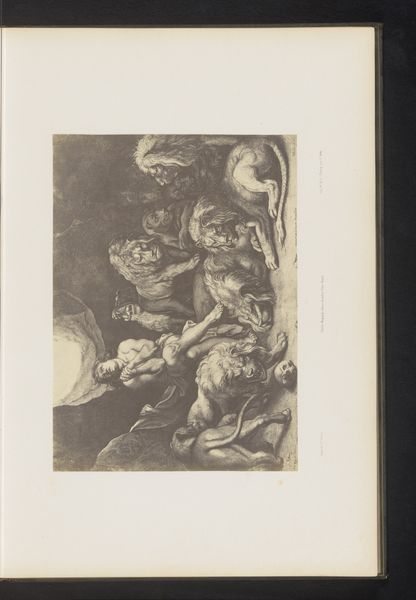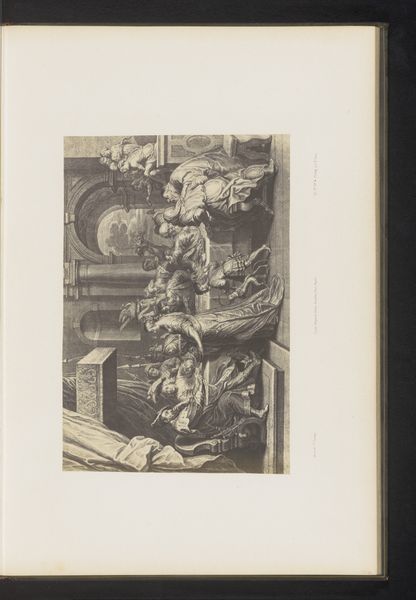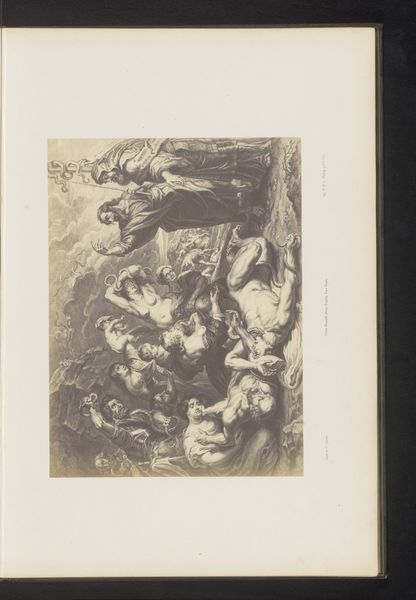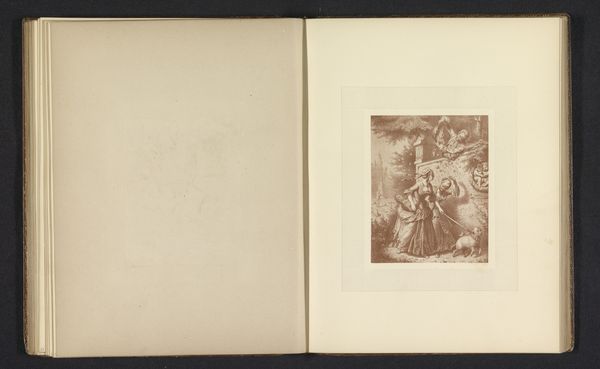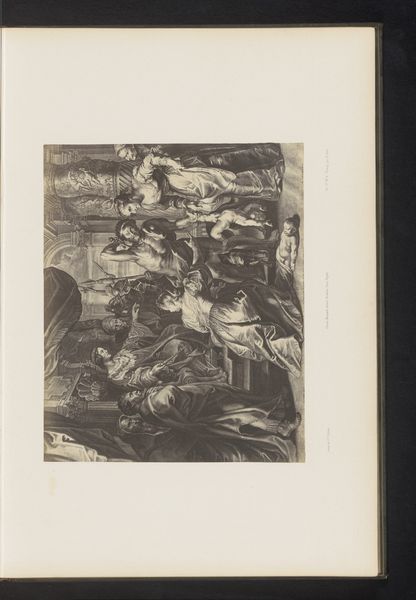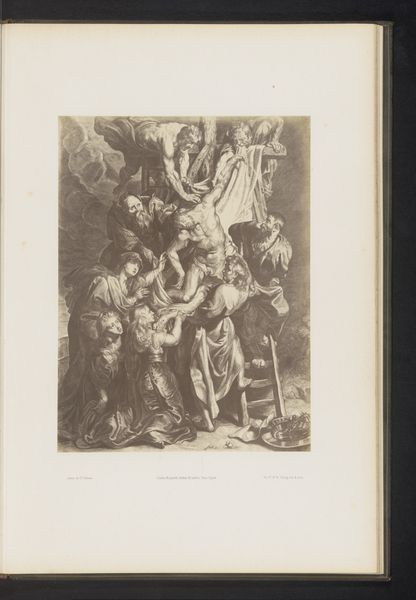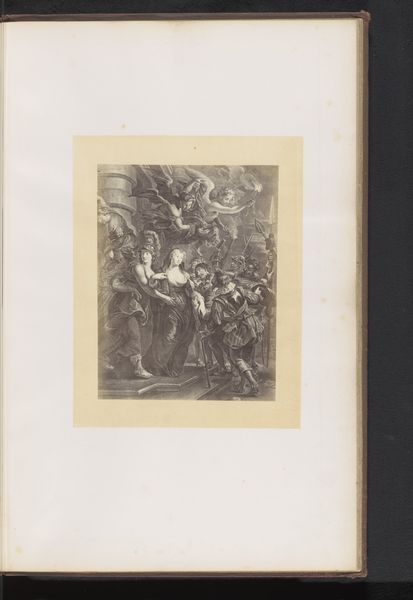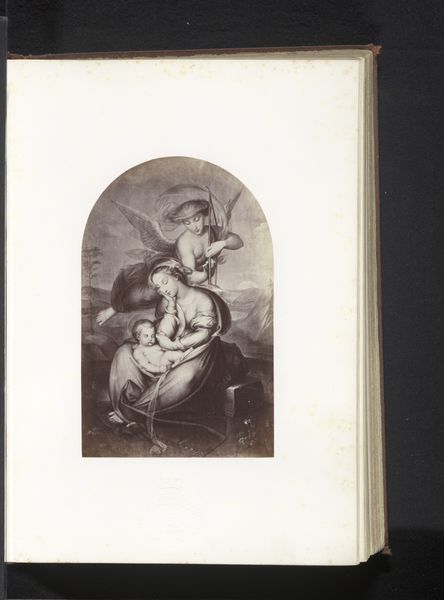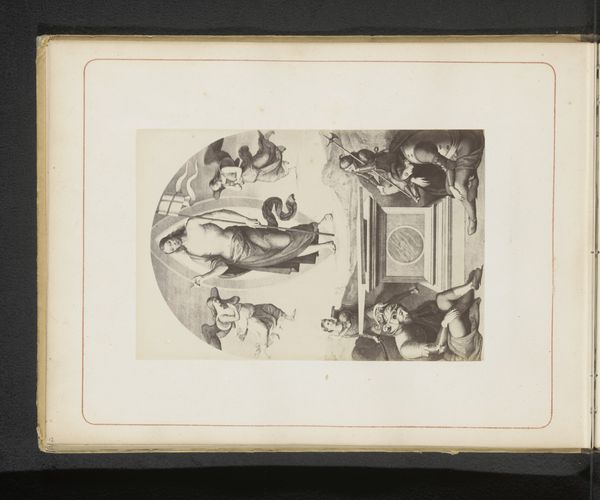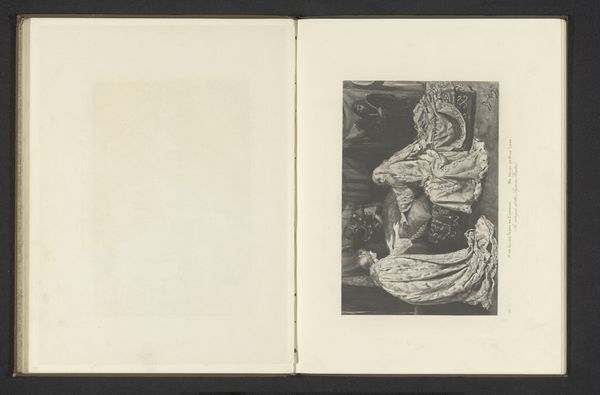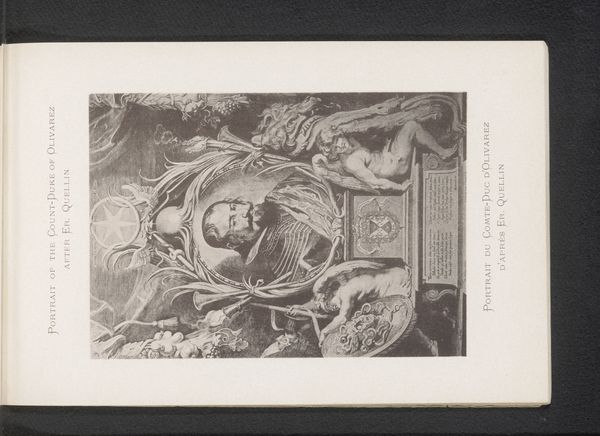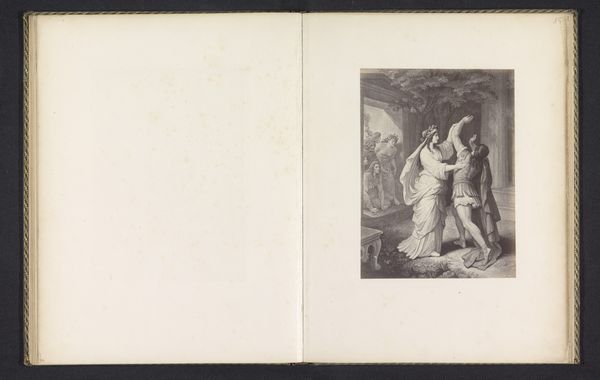
Fotoreproductie van een gravure van Feest in het huis van Simon de Farizeeër door Michel Natalis, naar het schilderij door Peter Paul Rubens before 1858
0:00
0:00
Dimensions: height 236 mm, width 299 mm
Copyright: Rijks Museum: Open Domain
Editor: This is a reproduction of a painting by Peter Paul Rubens, an engraving by Michel Natalis made before 1858, titled "Feast in the House of Simon the Pharisee." The density of figures really strikes me. What sociopolitical dynamics were at play here? Curator: Excellent observation. Consider the performative nature of religious piety during the Baroque era. Rubens' original painting, and subsequently this engraving, isn't simply a depiction of a biblical scene, but a staged display of power and moral hierarchy. How do you think Natalis' choice of engraving as a medium affects this representation? Editor: Well, prints were more widely accessible. Could this image then be seen as a form of social commentary, perhaps subtly questioning the elite's interpretation of faith? Curator: Precisely. The engraving allowed for the dissemination of Rubens' vision, inviting broader audiences to engage with these complex social dynamics. Think about the story being depicted: Christ, often positioned as a radical disruptor of social norms, is amidst the Pharisees, the religious elite. Does the positioning of the figures give you any hints about Natalis’ social commentary? Editor: Looking at the engraving, the Pharisees do seem almost theatrically staged. They seem like they're aware of being observed. The detail almost feels like an indictment, or, at least, critical examination, of power structures. Curator: Absolutely. Natalis’s choice emphasizes the performativity inherent in these displays of piety. And by making the image widely available, he invites a wider public to analyze the values of those in power. Now, consider the role of women in this narrative... Editor: This has really shifted my perspective, seeing it not just as a religious scene but a complex commentary on power, performance, and accessibility. Curator: Indeed, art often operates on multiple levels, reflecting and shaping the socio-political landscape in which it’s created and viewed. This lens helps us deconstruct not only the artistic choices but also the cultural values they represent.
Comments
No comments
Be the first to comment and join the conversation on the ultimate creative platform.
